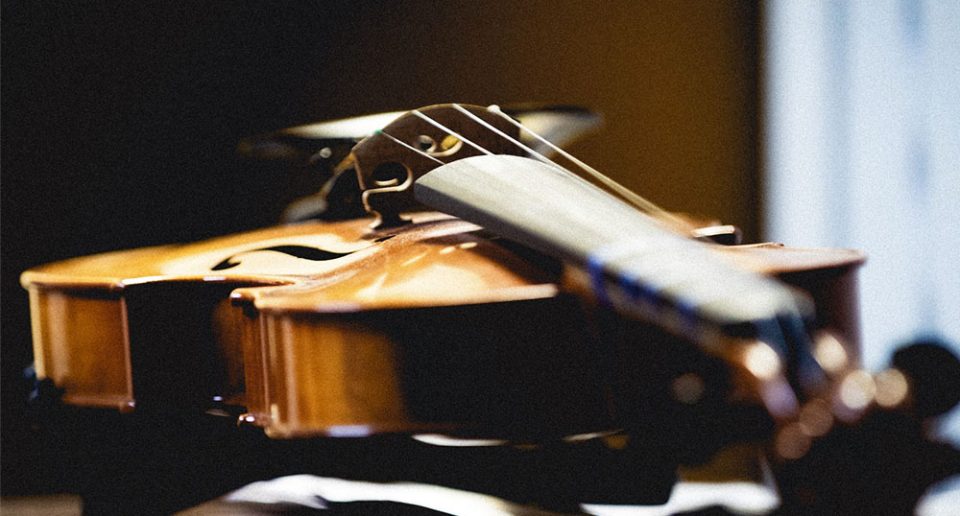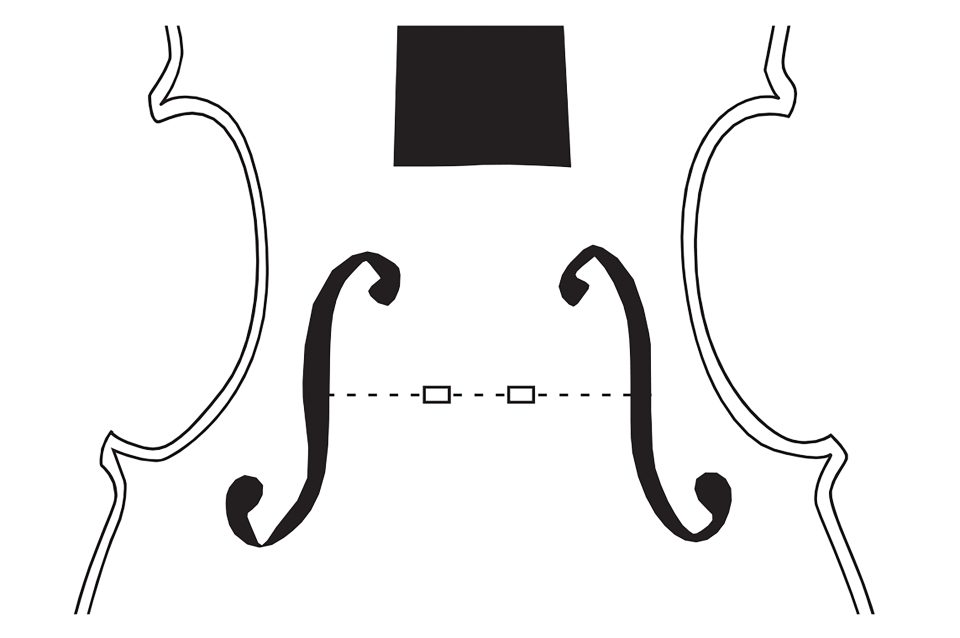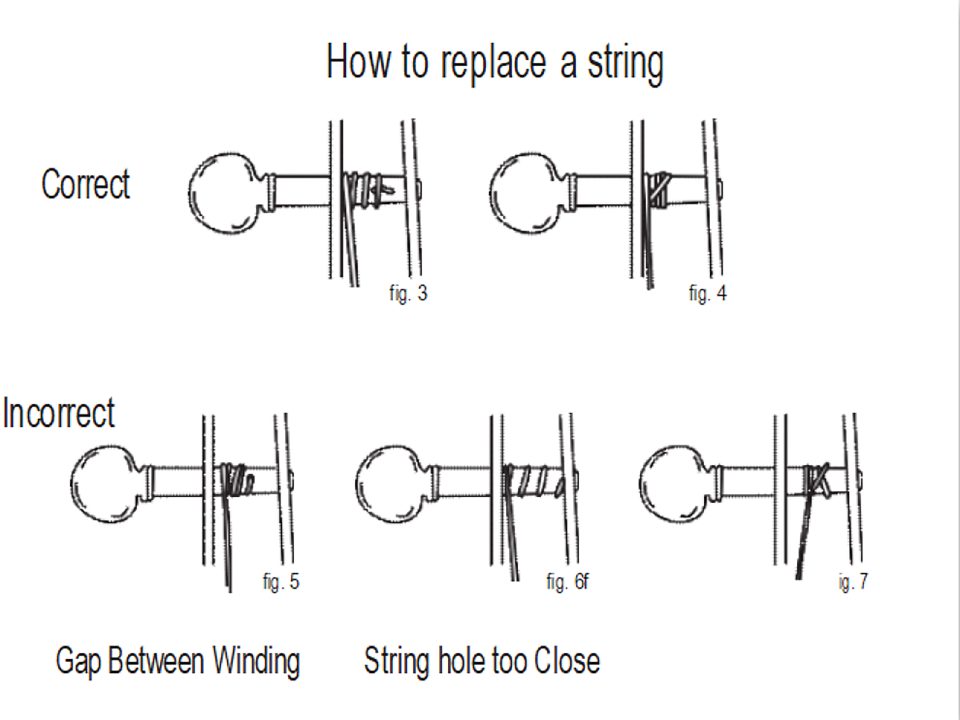
- by Bernhardt | House of Violins
- September 14, 2022
- How To
- Comments:2
Bridge
Alignment Guidelines:

- Side view (see figure 1). Bridge should appear to “lean” toward tailpiece, with the side nearest the tailpiece at a 90° angle with the top (slightly more angled for cellos and basses)
- Top view (see figure 2). Precise bridge placement is a matter of careful measurements with respect to the length of the neck and the size of the body — but a general guideline that is fairly safe is to set the bridge on top of an imaginary line drawn between the two inner notches on the F-holes. Align the bridge from side to side so the strings are evenly spaced on the fingerboard.

Pegs
Basic peg maintenance:
- Peg compound — Hill peg compound is good. New pegs require more compound than ones more worn in. Peg Compound is a lubricant and a friction enhancer both; to vary the effect, vary the amount. Avoid chalk and peg soap. Sometimes wiping off excess peg compound will help. Winding string — proper string winding is the most important factor in making well-fitted pegs.
- work smoothly (see figures 3-7).
Replacing a String:
- Use pencil lead in nut and bridge grooves. This prolongs the life of the string, nut, and bridge

Bows
Hair length:
- Do not force the bow screw if you cannot get the hair tight enough
- When the frog is all the way up the slot, if the hair hangs down, it is too long — to the shop!
- Hair must be slack when the screw is turned out all the way. If not, rehair. Cause — humidity, bad
Preventative Maintenance For The Student
Every time you play:
- Loosen the bow
- Wipe off the top of the instrument and the top of the bridge for cellos and basses.
- Never stand a cello/bass upright against a wall or corner. Lay it on its side (ribs)
Once a week:
- Check bridge alignment – report to teacher
- Check string windings for breaks or stretches
Once a month:
- Crank out tuners and return pegs
Every Nine months:
- Check to see if your bow needs a rehair
- Check to see if your bow needs new thumb leather
- Replace strings
- Bring instrument into shop for maintenance

